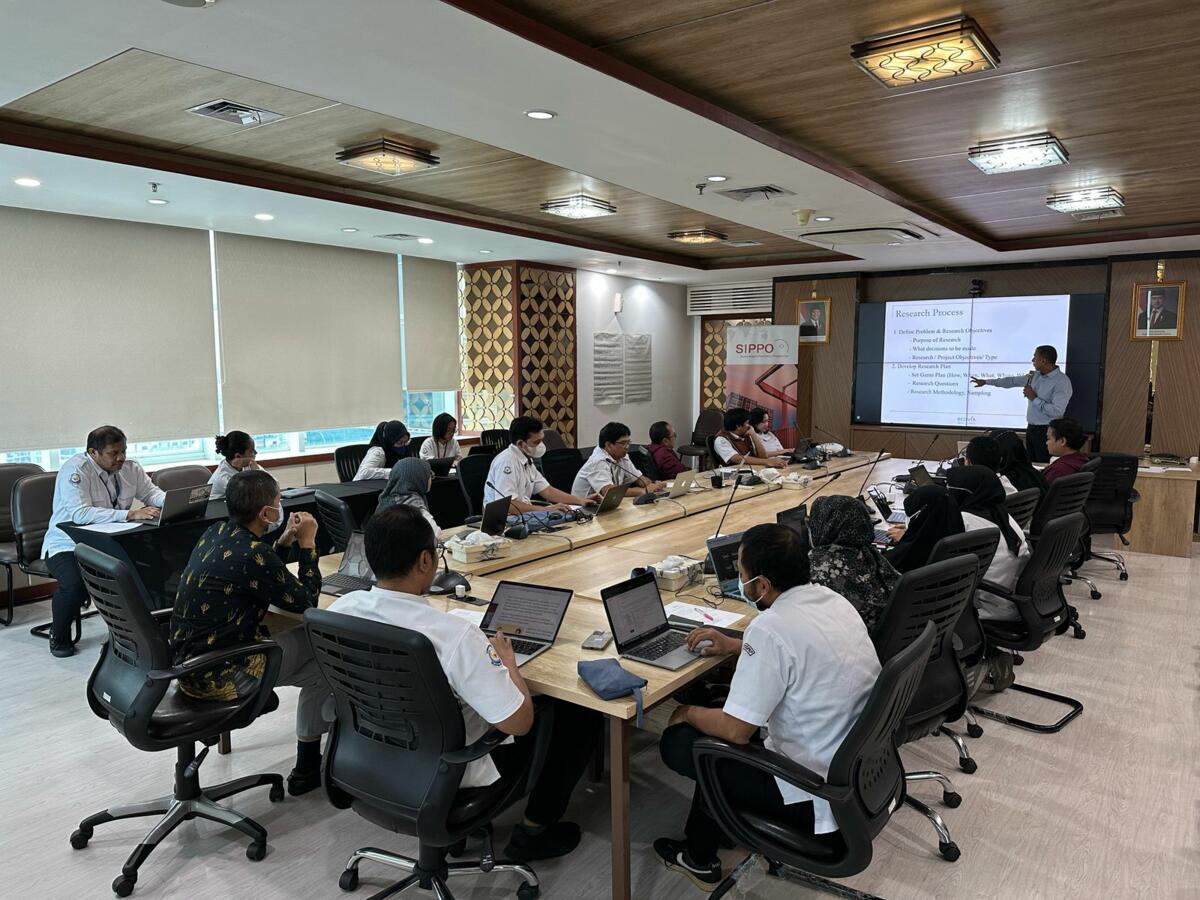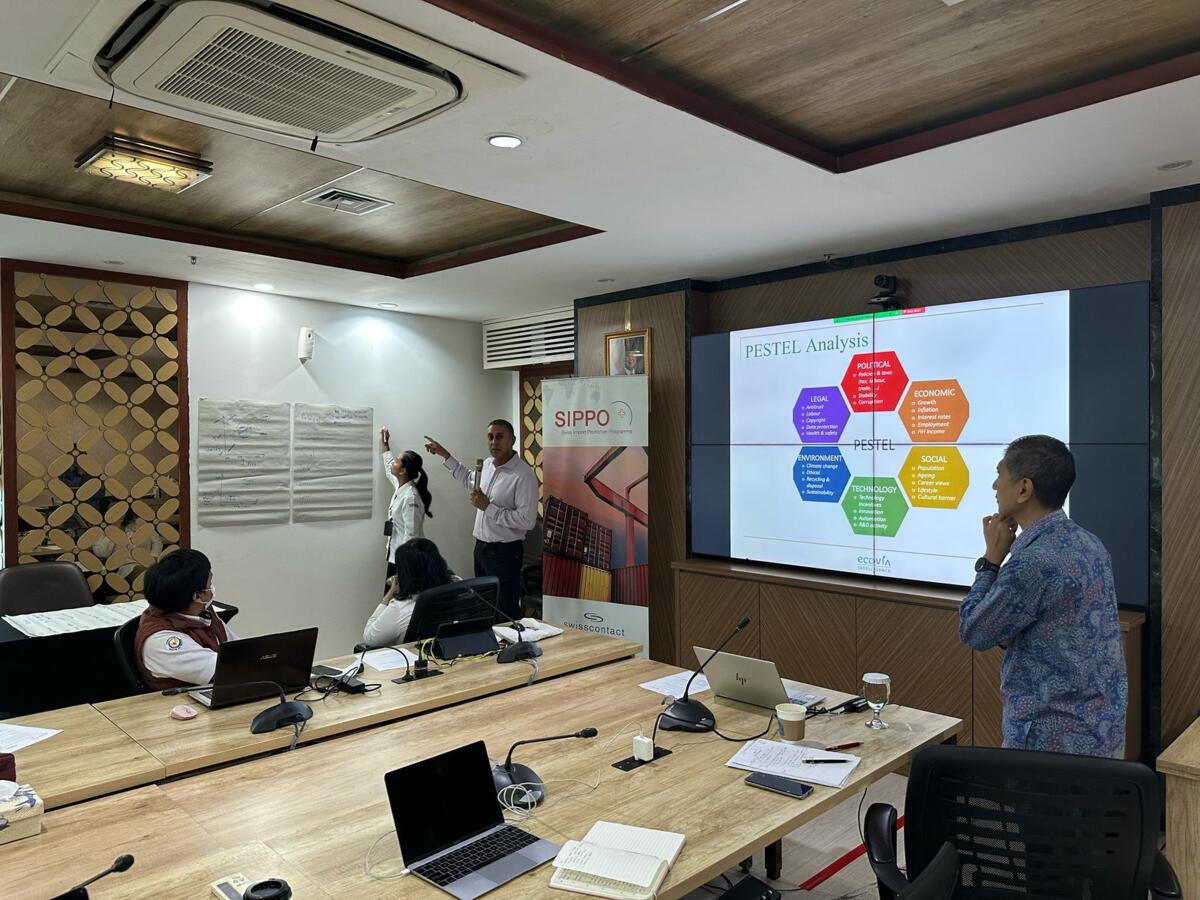Unlocking Global Potential for Fish and Seafood Exports through Market Intelligence
SIPPO Indonesia kicked off the year with a market intelligence training with the Ministry of Marine Affairs and Fisheries (MMAF) on 3-4 March 2025. This market intelligence training is focusing on data analysis and interpretation on customer preferences by introducing various analytical tools and methodologies, both for quantitative and qualitative analysis. Through this training, it is hoped that MMAF will be able to shape a strong policy on products prioritization of fish and seafood exports.

Understanding costumer preferences on fish and seafood products
Indonesia, an archipelagic nation, is home to over 8,500 fish species. With such abundant resources, the country is recognized as a global leader in seafood production, sustainably sourced from both wild fisheries and aquaculture. The Ministry of Marine Affairs and Fisheries (MMAF) has announced that, in 2025, it will focus on boosting exports of five key seafood products sourcing from aquaculture including shrimp, processed seaweed, tuna, crabs, lobster, and tilapia fish. MMAF is aiming to increase the export values and market share of these commodities, to EU countries and Switzerland, as well as to other potential regions. One of the most crucial factors to support this is a robust and comprehensive market research to understand the customer preferences. This is important to ensure that MMAF will be able to prioritize the selling of their products to the right market.
Taking this opportunity, SIPPO, in collaboration with Ecovia Intelligence, supported MMAF to conduct a two-days training on market intelligence to analyse customer preferences on 3-4 March 2025. As many as 20 participants joined the meeting from the foreign market analyst team, domestic market analyst team, and international marketing promotion team. On the first day, the training detailed the step-by-step process of conducting market research on customer preferences, starting from types of market research, development of research designs, development of questionnaires including how to ask sensitive questions (such as price, volume, competitor, buyer), how to map a supply chain, and how to conduct data collection process. The training also provided insights from customer research failure examples, that should take into account, which usually happened because of lacking good understanding and communication with customers.
The second day of training was more in-depth on the data analysis and introduction to various analytical tools. This session explores various data analysis including, product competitiveness, price fluctuation, dynamics import pricing behaviour, market projection, market trend, consumer behaviour in certain segmented market in targeted countries, as well as a qualitative analysis on sustainability, traceability, certification/compliance perspective. Amarjit Sahota, market research expert from Ecovia Intelligence, has successfully made the training to be interactive by using various exercises.
He continued the training with the introduction of various analytical tools that can be relevant with the purpose of market intelligence activity within MMAF. This includes, among others: PESTEL analysis, Porter’s Five Forces, Competitive Advantage and Comparative Advantage, Revealed Comparative Advantage analysis for product competitiveness; as well as Ansoff Matrix, GE Business Screen, and BCG Matrix for growth strategy. In addition, the training also highlighted about Structural Equation Modeling to understand consumer behaviour in the market.
“We thank SIPPO and Amarjit for providing this training. We found it to be insightful, as it brings novelty to our market research approach, mainly on qualitative research,” said Mr. Helwijaya Marpaung, staff of Foreign Market Analysis Team, Directorate of Marketing MMAF. In addition, Mrs. Cynthia Aryshandy also mentioned, “The sessions were not only insightful and informative, but also truly engaging.”
Although relatively short, the learning process will still be continued in the implementation of market research project on customer preferences of fish and seafood products in the near future with MMAF. It is hoped that through this process, MMAF will be able to apply the knowledge, regularly update their capacity, and furthermore replicate the exercise to all priority commodities within the ministry.



 Ukraine
Ukraine













